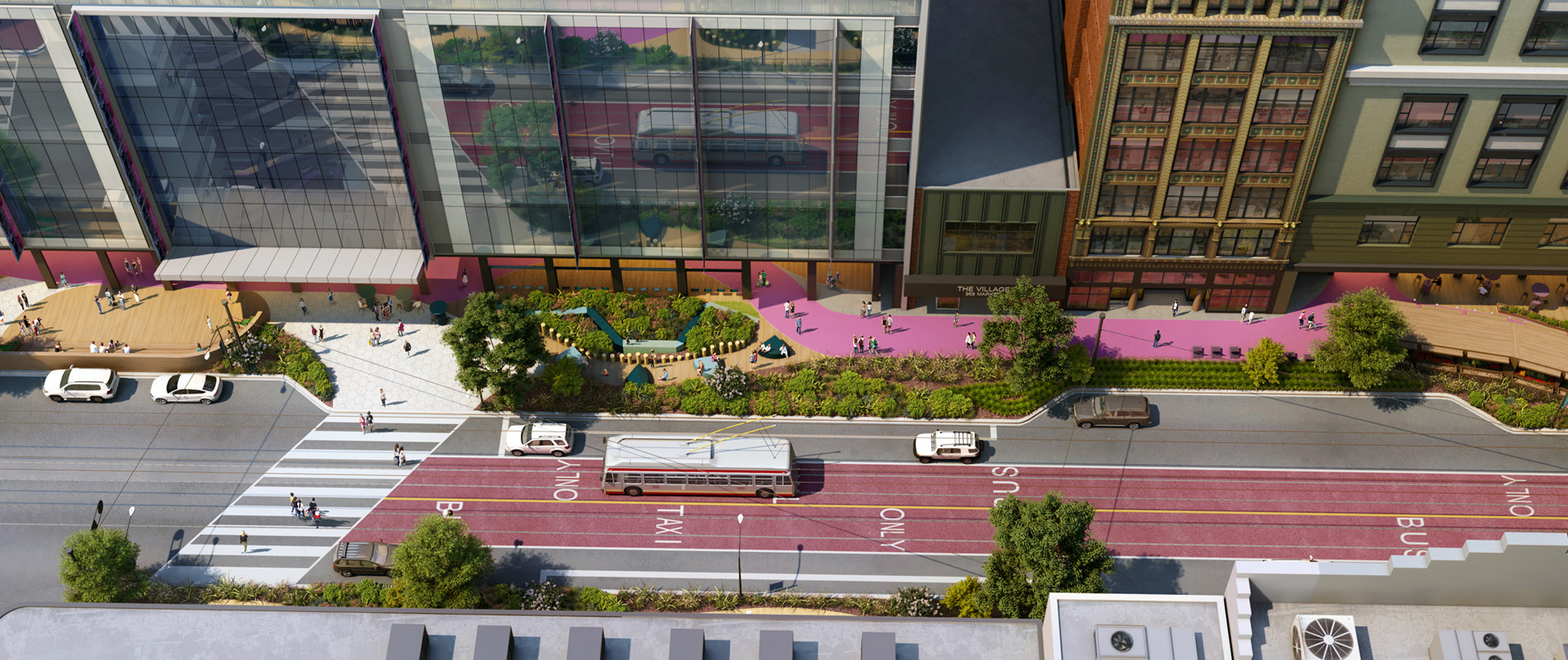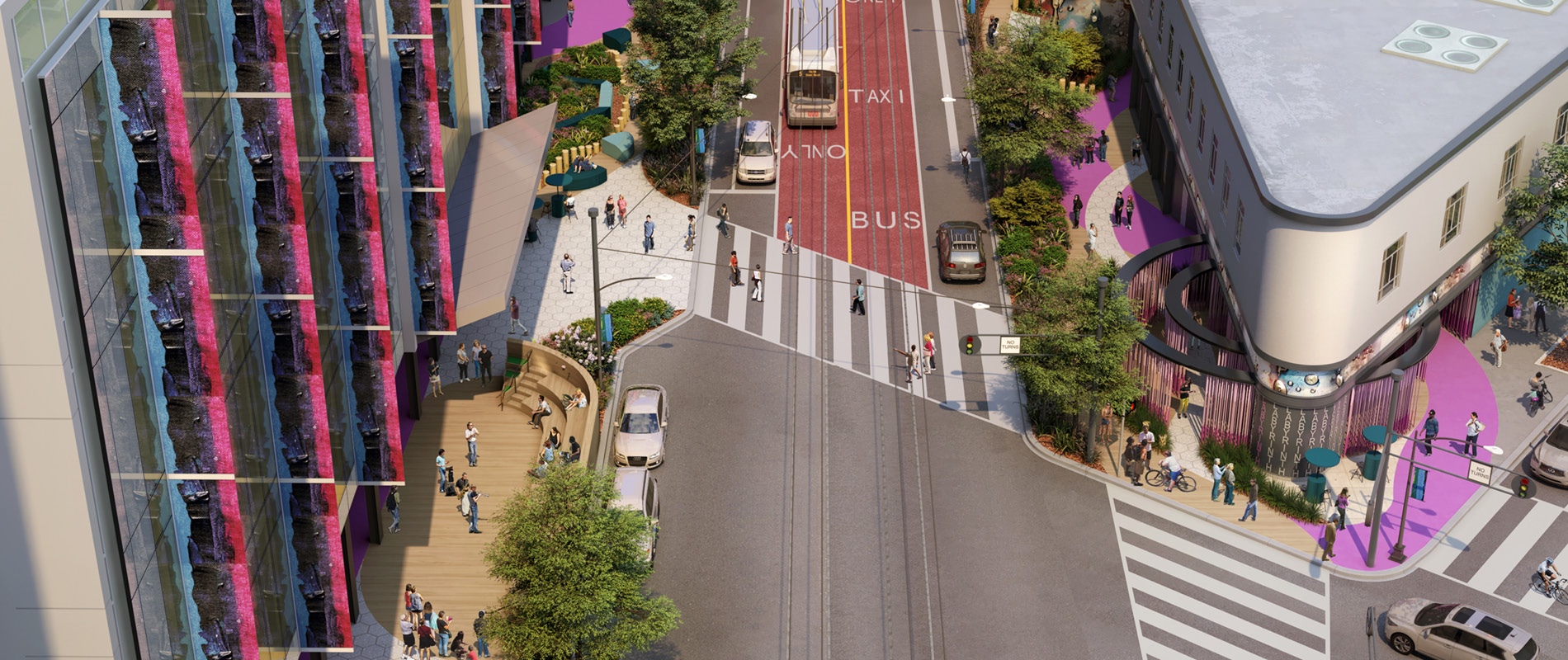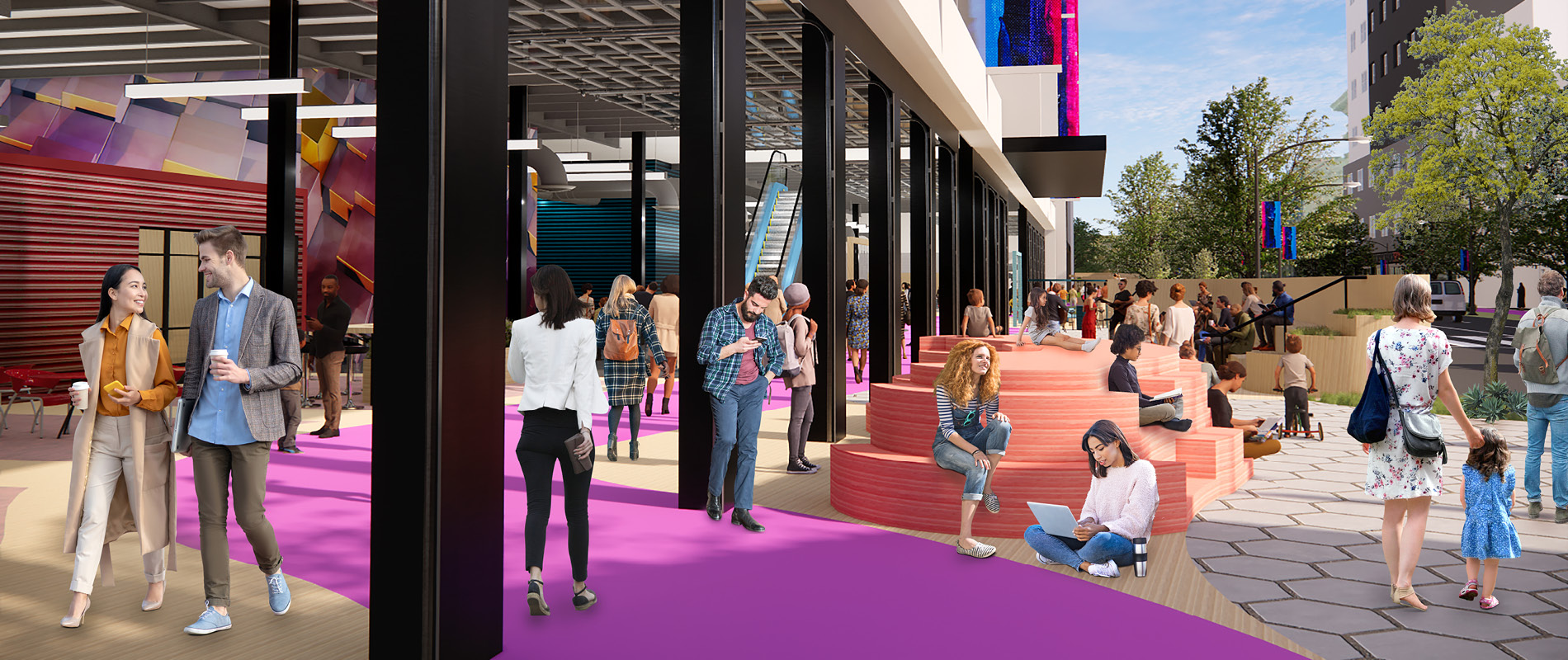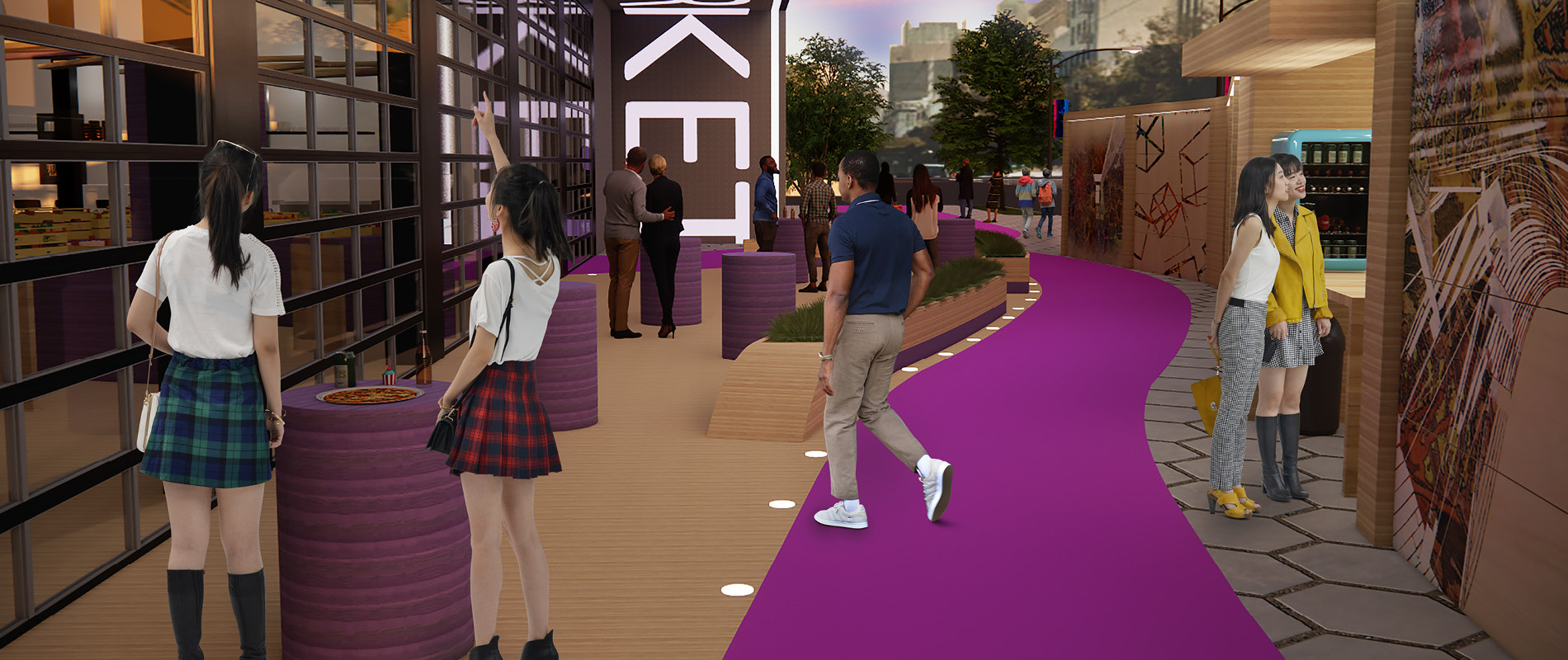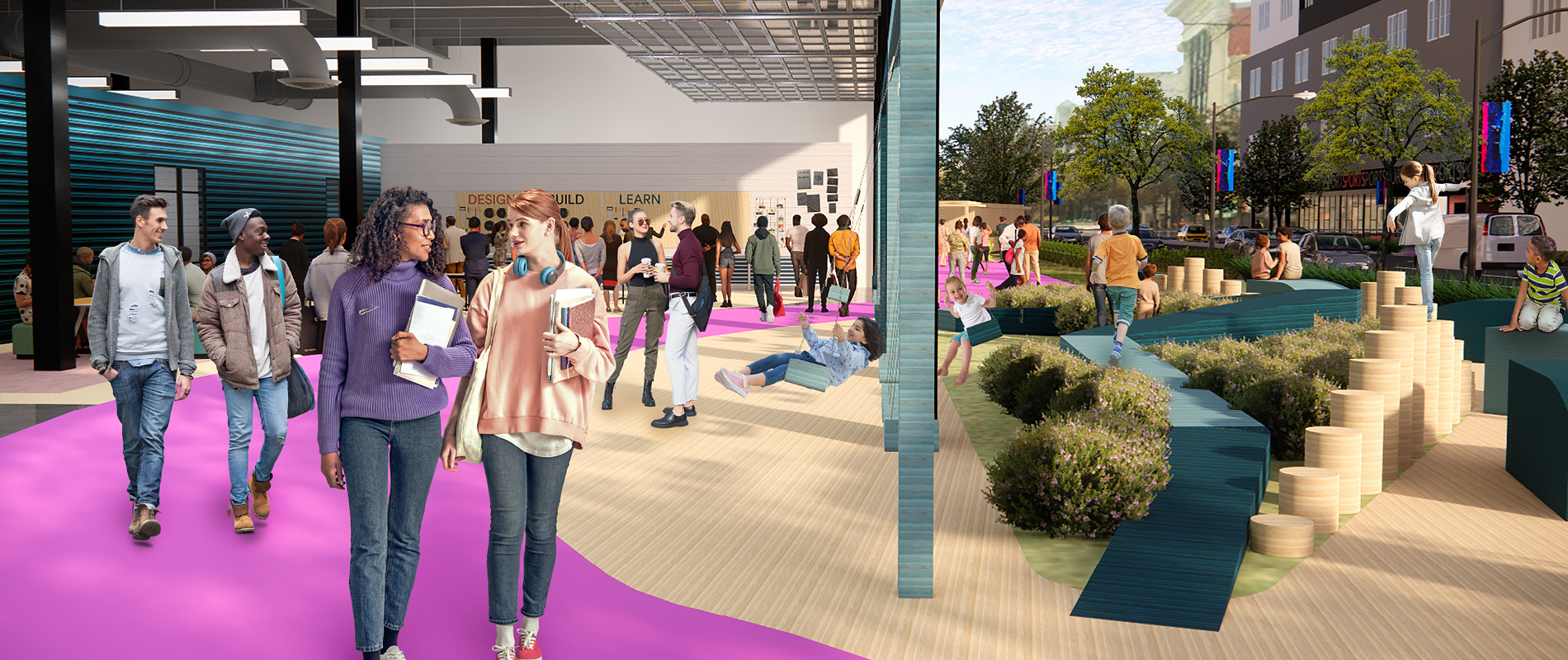In response to the changing needs of communities, KTGY’s Research and Development Studio created Alt-Way, an alternative solution to traditional ground-floor retail at the base of mixed-use buildings. The Alt-Way concept proposes integrating community programming elements along a meandering pathway, weaving in and out of the ground-floor space, tying the urban sidewalk into the ground floor of the mixed-use building, and drawing foot traffic toward larger retail spaces located deeper within the building footprint. By connecting programmed spaces designed to support community growth and development to the adjacent sidewalk, this concept addresses both the issue of activating the ground plane while also creating a mutually beneficial relationship between the residential units above and the surrounding community.
Striving to achieve the ever-important, active ground plane, design and planning discussions often lead to a typical retail solution. This can create the desired effect, when supported by other successful retail and drawing from preexisting pedestrian pathways, however, without proper site location and some existing neighborhood walkability, often these ground-floor retail spaces are not leased as anticipated, leading to further inactivity at the ground plane. Traditional retail continues to struggle in certain locations and brick-and-mortar shops lean heavily on their e-commerce presence, causing the number of available retail spaces to far outpace the potential retailers that would successfully create the desired street activation. An alternative solution for activating the urban ground plane, the Alt-Way concept proposes integrating community programming elements along a meandering pathway, weaving in and out of the ground-floor space and tying the urban sidewalk into the ground floor of the mixed-use building. By connecting programmed spaces designed to support community growth and development to the adjacent sidewalk, this concept proposal addresses both the issue of activating the ground plane while also creating a mutually beneficial relationship between the residential units above and the surrounding community.
Community development advocates look for new opportunities to bolster local small businesses, support community needs, and foster equitable neighborhoods. Non-profit community organizations, though perhaps less directly lucrative than some retail tenants, can provide widespread and lasting benefits to neighborhoods while also instigating a similar level of activity as traditional retail tenants. Drawing in community members for educational opportunities, community performances, social activities, and support functions, the resulting foot traffic further promotes integrated small-business retail and creates the active and symbiotic relationship between street level functions and the residential units above. In addition to creating a strong sense of community, providing these types of supportive functions in proximity to residential spaces makes them easily accessible to those who need them most.
